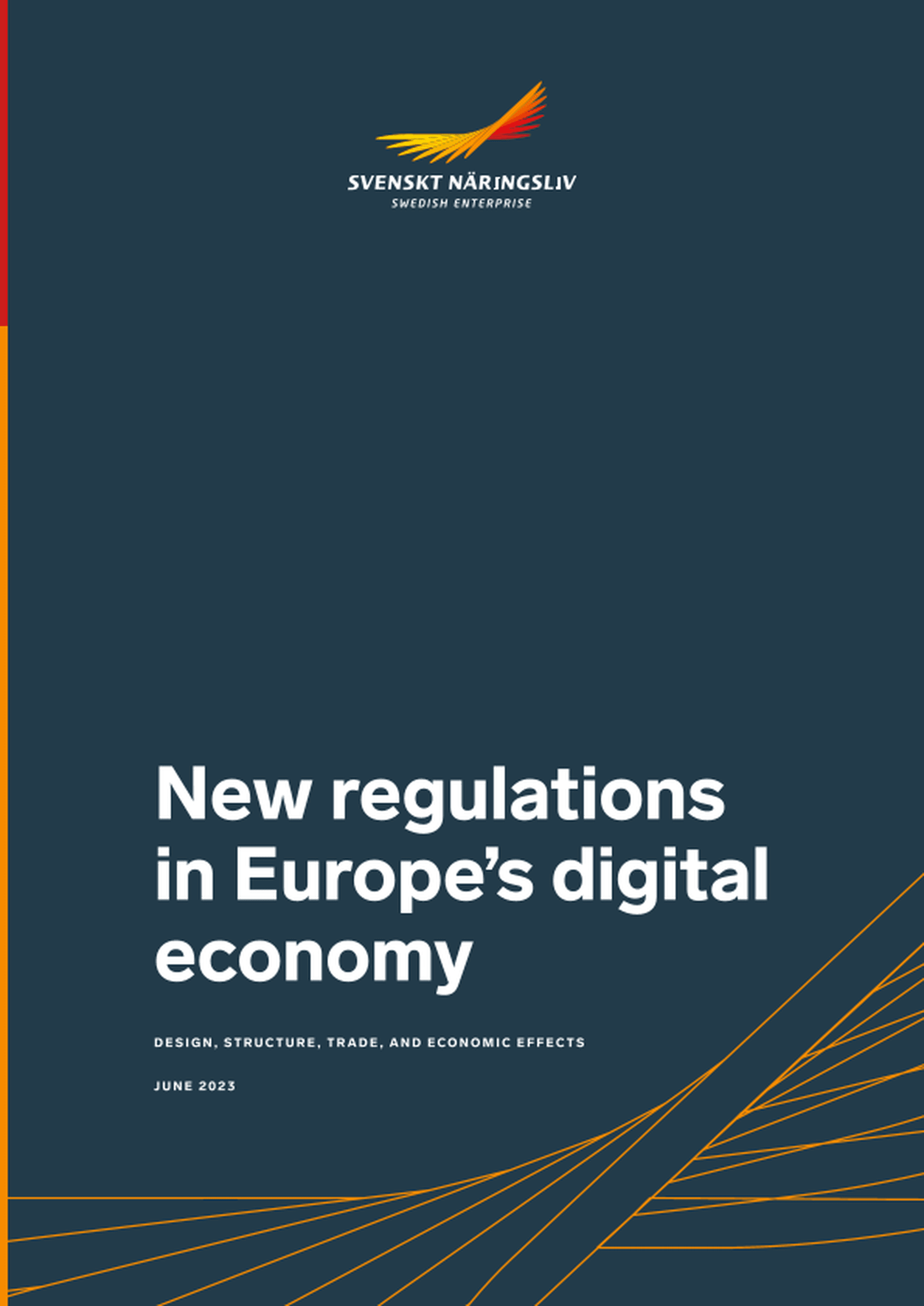New Regulations in Europe’s Digital Economy: Design, Structure, Trade and Economic Effects

In recent years, the European Union has become very active in regulating data and the digital economy. To address specific concerns and generally to develop technological and digital autonomy in Europe, the European Commission has launched scores of new regulations that individually and collectively will have a strong impact on Europe’s digital economy. This report aims to shed light on four new digital regulations – the Digital Markets Act, the Digital Services Act, the Artificial Intelligence Act, and, finally, the Data Act. The report analyses the purpose, structure, and design of the regulations, and reviews the quality of the regulatory process – especially the extent to which the Impact Assessments provided adequate contextual and economic analysis. Additionally, the report seeks to map potential frictions between the digital regulations and EU commitments in international trade agreements – issues that were largely absent in the Impact Assessments of the four regulations.
Some general conclusions can be drawn.
– All four regulations are complex. The objectives are often not clearly defined, and concepts used in the regulations – for example how they define “data”, “data holder”, and “artificial intelligence” – are ambiguous and prompt more questions than they give answer. The regulation assumes that later regulatory processes (for instance, through the work of standardisation bodies) will help to define and make regulations more operable. While standards are incredibly important and helpful, there is much that standards cannot achieve and that must be clearly defined or decided by legislators. Overall, the EU should make greater efforts to provide less complex regulations and be clearer in how its objectives are reflected in the regulatory provisions.
– The Impact Assessments of all four regulations are inadequate. While it is difficult to provide context and deep economic analysis of complex regulations and of complex economic phenomena – it is obvious that the assessments have neglected important areas of the regulations. The economic analyses in the Impact Assessments, or accompanying reports, are incomplete. They exaggerate benefits and come to conclusions, for instance on GDP effects, that are very unlikely. Moreover, the assessments routinely find administrative and implementation costs to be remarkably low. There is a wealth of economic analyses of previous regulations that could help provide more realistic economic estimations of the effects.
The conclusions drawn is that, because of inadequate analyses, legislators are flying in the dark about the reasonable economic effects of regulations. Better economic analysis and higher standards in the Impact Assessments are important for two other reasons. First, legislation often changes between the tabled proposal and the final version of a new regulation, and the EU could benefit substantially by having more opportunities for evaluation – in addition to presenting more solid analysis at the time when a proposal is made. Second, the four regulations will all have a substantial impact on the same services, data, companies, investments and trade flows. Several regulations overlap and their combinatory effects are likely to be considerable – which motivates not just analysis of one single proposal but of several proposals.
– Trade and trade policy are routinely neglected in the proposals and the Impact Assessments. Given that digital services are of strong importance for the European economy, and that the EU is competitive and runs a significant trade surplus in these services, such neglect goes against Europe’s economic interest. Notably, the debate surrounding the four regulations often starts from the presumption that Europe should be defensive because it lacks international competitiveness. A more careful approach would accommodate the fact that new regulations can impact Europe’s international competitiveness and reduce its trade surplus.
– Some of the new digital regulations are clearly discriminatory as they exclude some providers of digital services – as, for instance, in the Digital Markets Act and the Data Act. Even if it is not de jure discrimination, it is obvious that there are considerable frictions between effective discrimination and EU obligations in the World Trade Organisation (WTO). While the relevant WTO agreement allows for departures from rules and obligations, these departures are conditional and the rules to obtain approval to discriminate will be awkward for the EU, if another country decides to press it on WTO compliance. A better impact assessment could have helped to alleviate some of these frictions and made the proposals compliant with the EU’s international obligations.
– Many of the new regulations have consequences for the protection of trade secrets and other intellectual property rights. This can be a minefield. The structure of protection of assets and investments in the intangible economy is different from the tangible economy. Companies mix various forms of protection, including contracts, in order to have a model that gives sufficient motivations to make investment in data and digital services, and sharing them with others. Some of the new regulations, especially the Data Act, can upend this system of protection and erode trade secrets. It is highly advisable that the legislator develop a much deeper understanding of the consequences of such initiatives before they are made.
– The effects of the four digital regulations are geographically concentrated. It is predominantly services and service suppliers from the US that will be affected. This clearly raises the risk of retaliation – in the same way as the US moved for retaliation against EU countries introducing new digital services taxes. If the effect is diffused on many countries, there is less likelihood of retaliation. If the effects are concentrated, the risks of retaliation increase substantially.